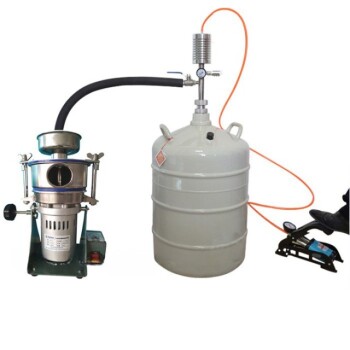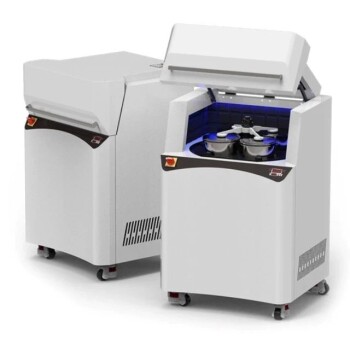Introduction to Laboratory Crushers
Laboratory crushers play a crucial role in scientific analysis and research. They are essential equipment used in various industries such as mining, metallurgy, and chemical. This article provides a comprehensive guide on laboratory crushers, exploring their uses, working mechanisms, and applications. The introduction defines laboratory crushers and highlights their importance in scientific analysis and research. It also gives an overview of the uses and applications of laboratory crushers, setting the stage for a detailed exploration of their working mechanisms and applications in subsequent sections. Stay tuned to learn more about how laboratory crushers are used and their significance in different industries and environmental studies.
Understanding the Working Mechanism of Laboratory Crushers
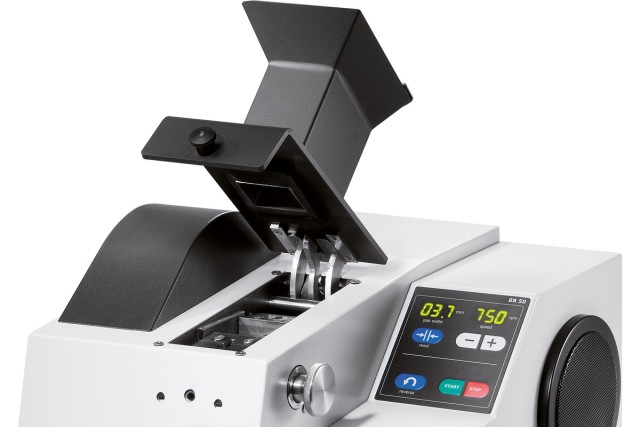
Laboratory crushers, specifically jaw crushers, are important equipment used in many scientific and research laboratories. They are designed to reduce solid samples such as rocks or crystals into smaller particles or powders. In this section, we will explore the key working mechanisms of laboratory crushers and their role in sample preparation.
Description of the Key Mechanism of Laboratory Crushers
The primary mechanism of laboratory crushers is the jaw crusher, which operates based on the principle of a curved extrusion type crushing method. The jaw crusher consists of a fixed plate and a mechanically-operated gyrating plate, which are arranged in a funnel shape.
The funnel-shaped structure of the crusher has a wider feed opening at the top and a narrow discharge aperture at the bottom. This design allows for efficient feeding of the sample material and controlled discharge of the crushed particles.
Explanation of Jaw Crusher Operation
The operation of a laboratory jaw crusher begins when the moving jaw goes down. As the angle between the toggle plate and the moving jaw decreases, the moving jaw plate moves away from the fixed jaw plate under the action of the pull rod and spring.
As the material is fed into the crushing cavity, it is gradually broken and crushed by the movement of the gyrating plate against the fixed plate. The sample material undergoes a rocking motion, ensuring that it is successively crushed towards the discharge point.
Role of Fixed and Gyrating Plates
The fixed plate in a laboratory jaw crusher serves as the stationary surface against which the sample material is crushed. It is designed to withstand the pressure and force exerted by the gyrating plate during the crushing process.
On the other hand, the gyrating plate is responsible for the movement and crushing action. As it rotates, it applies a compressive force to the sample material, breaking it down into smaller particles.
Rocking Motion and Sample Crushing Process
The rocking motion of the laboratory crusher is a crucial aspect of its operation. This motion ensures that the sample material is adequately crushed and distributed within the crushing cavity.
As the gyrating plate moves, it pushes the sample material against the fixed plate, applying pressure and force. This rocking motion allows for efficient crushing and reduces the risk of sample material being stuck or accumulating in one area of the crushing cavity.
Discharge Area
The discharge area of a laboratory crusher is the narrowest point where the crushed particles exit the crushing cavity. It is strategically designed to control the size and flow of the crushed material.
By adjusting the width of the discharge area, researchers can regulate the final particle size of the crushed sample. This flexibility is crucial for ensuring accurate and consistent results in analyses and experiments.
In conclusion, laboratory crushers, particularly jaw crushers, play a vital role in sample preparation and analysis. Their working mechanism, utilizing a fixed plate and a gyrating plate, allows for efficient crushing of solid samples. The rocking motion of the plates ensures uniform distribution of crushed particles and controlled discharge. By understanding the working mechanism of laboratory crushers, researchers can optimize their use for various applications in scientific and environmental studies.
Applications of Laboratory Jaw Crusher
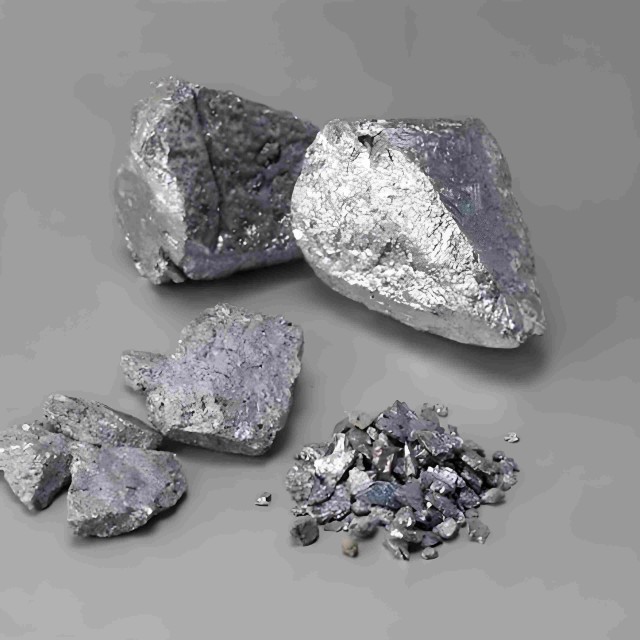
Laboratory jaw crushers, also known as jaw crushers, are widely used in various industries for their versatility and effectiveness in reducing solid samples into powder or dust. Here are some of the key applications of laboratory jaw crushers:
1. Crushing materials like limestone, calcium carbide, shale, and more
Laboratory jaw crushers are capable of crushing a wide range of materials, including limestone, calcium carbide, shale, basalt, river pebble, and bluestone. These crushers are particularly suitable for crushing hard and brittle materials with high compressive strength.
2. Impact on industries such as mining, metallurgy, and chemical
Laboratory jaw crushers play a significant role in industries such as mining, metallurgy, and chemical. In the mining industry, these crushers are used for crushing and reducing ore samples to facilitate mineral extraction. In the metallurgical industry, jaw crushers are used for crushing various types of ores, including iron ore and copper ore. In the chemical industry, these crushers are employed for processing chemical raw materials and compounds.
3. Use in calcium carbide plants
Laboratory jaw crushers are widely used in calcium carbide plants for crushing calcium carbide, which is a chemical compound used in the production of acetylene gas. The crushers help to break down the solid calcium carbide into smaller particles, which can then be further processed for various purposes in the chemical industry.
4. Significance in building materials, water conservancy, and transportation
Laboratory jaw crushers are also significant in the fields of building materials, water conservancy, and transportation. In the construction industry, these crushers are used for crushing various types of building materials, such as concrete, bricks, and stones, to produce aggregates for construction purposes. In the water conservancy sector, jaw crushers are utilized for crushing rocks and stones to create gravel for use in structural projects. In the transportation sector, these crushers are employed to crush materials for the production of road base and railway ballast.
Laboratory jaw crushers have a wide range of applications due to their versatility and effectiveness in particle size reduction. They are essential equipment in laboratories and industries that require the crushing and pulverizing of solid samples for further analysis and processing. Whether it is in mining, metallurgy, chemical, or the construction industry, laboratory jaw crushers serve as reliable and efficient tools for various applications.
In the field of scientific analysis, accurate and consistent results are of utmost importance. This is why specialized hydraulic laboratory crushers are an essential tool in sample preparation. These crushers are designed to trim excess material from samples and drill hollow cores into them before the crushing process begins.
The KINTEK 50 crusher is a prime example of a hydraulic laboratory crusher that combats the challenges faced during sample preparation. It features a unique double-acting jaw crusher design with dual-acting top and bottom jaws. These jaws are capable of holding a 10kg sample and crushing a 70mm sample to 2mm in a single pass. This crusher has proven to significantly improve efficiency by reducing samples by 35 times their original size. It achieves this through simultaneous gyrating of both jaws and the use of plates made from high chrome iron, which enhances abrasion resistance. For larger samples, the KINTEK 100 Crusher employs the same principle and can process samples of up to 15kg, reducing samples of 110mm to 2mm in a single pass.
Different types of crushing equipment are available for various applications in the laboratory. The three main types of crushers are primary, secondary, and tertiary crushers. Primary crushers are used to break down large materials into smaller, more manageable sizes. Secondary crushers further reduce the size of the particles produced by primary crushers. Tertiary crushers are used to produce even smaller particle sizes.
Production of Finely-Powdered Samples
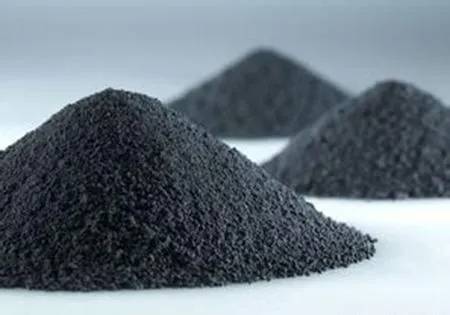
Sample preparation is a crucial step in the analysis of materials using X-ray fluorescence (XRF) techniques. In order to obtain accurate and reliable results, it is important to ensure that the samples are finely powdered and properly prepared. Finely powdered samples offer several advantages such as improved accuracy, suitability for subsequent analysis, and are commonly used in scientific research and analysis.
Importance of Finely-Powdered Samples
The analysis of loose powdered material requires the samples to be placed into a plastic sample cup with a plastic support film. This ensures a flat surface for the X-ray analyzer and supports the sample over the X-ray beam. The finer the ground sample, the more likely it is to be homogeneous, with limited void spaces, which leads to better analysis results. Sufficient powder should be used to ensure that infinite thickness is obtained for all the elements of interest.
For most materials, using 15g of sample is recommended to meet this requirement. However, special care should be taken when analyzing metal powders in high-power Wavelength Dispersive XRF (WDXRF) instruments, as the sample can heat up during analysis and potentially melt through the support film, resulting in abrasive powder being spilled directly into the instrument.
Another sample preparation technique is pressing powder into pellets. This process involves grinding the sample into a fine powder, with a grain size ideally less than 75µm. The powder is then mixed with a binding/grinding aid, typically a cellulose wax mixture, in a proportion of 20%-30% binder to sample. The mixture is then pressed in a die at high pressure to produce a homogeneous sample pellet.
Pressed Pellets vs. Loose Powders
Both pressed pellet and loose powder methods are common techniques for XRF analysis of powders. Neither of these techniques requires any chemical processes, making them convenient and efficient for sample preparation. However, careful selection of the appropriate method and accessories is important to prevent breakage of pressed powders during measurement and minimize analysis errors.
Pressed pellets offer several advantages over loose powders. The pressing process ensures the sample is homogeneous and compact, resulting in improved accuracy and precision. The pellets provide a stable and consistent surface for analysis, minimizing variations that can occur with loose powders. Additionally, pressed pellets are more resistant to handling and transportation, reducing the risk of sample contamination and loss.
On the other hand, loose powders are easier to prepare and require less equipment. They are typically used when analyzing large quantities of samples or when rapid analysis is required. Loose powders also allow for more flexibility in sample size and measurement techniques.
Choosing the Right Crushing Equipment
- Importance of appropriate crushing equipment
- Maintenance of sample integrity and quality
- Representative samples for accurate analysis
Sample preparation is a vital step in scientific analysis, and choosing the right crushing equipment is essential to ensure accurate and consistent results. The proper selection of crushing equipment not only helps in reducing the size of bulky materials but also plays a crucial role in maintaining the integrity and quality of samples. In this article, we will discuss the importance of selecting suitable crushing equipment for laboratory applications.
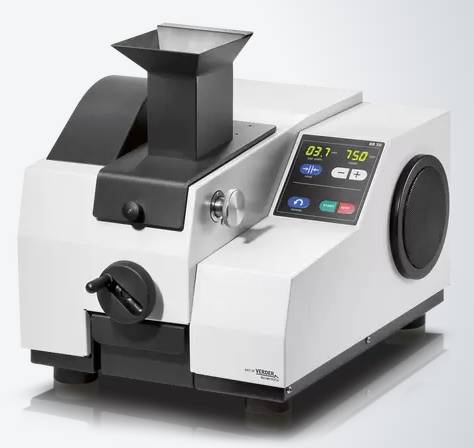
Reduce Heterogeneity
One of the primary goals of sample preparation is to obtain a representative sample that eliminates the heterogeneity of the original material. By effectively crushing and homogenizing the sample, researchers can ensure that their analysis is representative of the entire population. A homogenized sample reduces the risk of bias and improves the reliability of experimental results.
Minimize Variability
Consistency is key when it comes to sample preparation. The use of appropriate crushing equipment allows researchers to prepare samples consistently, minimizing variability between experiments. Consistent sample preparation is particularly important when conducting studies that require replicability or comparing results across different samples.
Eliminate Interference
Impurities and contaminants present in the sample can interfere with the accuracy of analysis. Choosing the right crushing equipment can help eliminate these interferences, ensuring that the results obtained are not skewed by external factors. By effectively removing impurities and contaminants, researchers can improve the reliability and validity of their findings.
Increase Sensitivity
Sample preparation techniques, including crushing, can enhance the sensitivity of the analysis. By reducing the sample to a finer particle size, the detection of trace levels of analytes becomes easier. This increased sensitivity allows researchers to detect compounds that may have otherwise gone unnoticed without proper sample preparation.
When selecting crushing equipment for laboratory applications, it is crucial to consider the size reduction principle employed by the equipment. Most sample materials can be adequately reduced to the desired analytical fineness at room temperature by using mills with suitable size reduction principles such as cutting, shearing, friction, impact, or pressure. However, certain materials may require size reduction at cryogenic or cold temperatures to prevent negative effects on the sample.
Cryogenic or cold grinding is particularly useful for samples that are sensitive to temperature or highly elastic. This technique involves the use of grinding aids, such as dry ice or liquid nitrogen, to embrittle the sample, making it easier to break. Additionally, cryogenic grinding preserves volatile components of the sample, ensuring that they are not lost during the size reduction process.
One example of a crushing equipment designed to handle a wide range of materials is the KINTEK 50 crusher. This double-acting jaw crusher features dual-acting top and bottom jaws capable of holding a 10kg sample and crushing a 70mm sample to 2mm in a single pass. The use of plates made of high chrome iron in the crusher improves abrasion resistance and facilitates efficient sample reduction. For larger samples, the KINTEK 100 Crusher utilizes the same principle, reducing samples of up to 15kg and 110mm in size to 2mm with ease.
Reduction of solid samples to fine dust or powder
The primary function of a laboratory crusher is to reduce solid samples to fine dust or powder. This reduction in particle size is achieved through mechanical forces applied to the sample. Jaw crushers are commonly used for primary crushing of large samples, while hammer crushers are suitable for secondary crushing and finer particle size reduction.
To achieve the desired particle size, the sample is loaded into the crusher and subjected to forceful compression or impact. The crusher's mechanism applies pressure or strikes the sample, breaking it into smaller particles. The final product is a fine dust or powder suitable for analysis.
Role in molecular analysis
In molecular analysis, it is essential to have a sample with uniform particle size and distribution. A laboratory crusher plays a vital role in achieving this by reducing solid samples to finely-powdered form. This powdered sample can then be used for various molecular analysis techniques, including spectroscopy, chromatography, and mass spectrometry.
By reducing the particle size to micro scales, a laboratory crusher enables molecular analysis with higher accuracy and sensitivity. It allows researchers to obtain precise data on the composition, structure, and properties of the sample. This, in turn, helps in understanding the molecular mechanisms, interactions, and behaviors of substances under study.
In addition, laboratory crushers are commonly integrated with additional equipment to allow for automation of procedures or for more tailored specifications. This further enhances the efficiency and accuracy of molecular analysis in various scientific fields.
Overall, a laboratory crusher is a crucial tool in XRF sample preparation and molecular analysis. Its ability to reduce solid samples to fine dust or powder ensures the production of accurately-sized samples for further analysis. By using a laboratory crusher, researchers can obtain valuable insights into the composition, structure, and properties of various substances in a wide range of scientific applications.
Scope of Application
Laboratory crushers have a broad scope of application in environmental studies. They can be used to process a wide range of materials, including minerals, ores, rocks, slag, cement, ceramics, glass, metal filings, chips, drill chips, turnings, metal oxides, precipitates or residues from solutions, soil, aqueous sediments, organic matter, and biological materials. The versatility of laboratory crushers makes them indispensable for various types of environmental research.
In conclusion, laboratory crushers play a vital role in environmental studies by enabling the spectroscopic analysis of processed geological samples. These crushers facilitate the determination of material properties and provide valuable insights into the wider ecological environment. With minimal invasiveness and accurate data extrapolation, laboratory crushers are essential tools for researchers in their quest to understand and protect our environment.
Related Products
- Small Cryogenic Grinder Cryomill Cryogrinder with Liquid Nitrogen for Laboratory Use
- Laboratory Grinding Mill Mortar Grinder for Sample Preparation
- Laboratory Hybrid Tissue Grinding Mill
- Laboratory Micro Tissue Grinding Mill Grinder
- Laboratory High Throughput Tissue Grinding Mill Grinder
Related Articles
- Cryogenic Pulverization Technology and Its Applications
- Exploring the World of Molecular Gastronomy
- Application of Ultra-Micro Pulverization Technology in the Food Industry
- Preserving the Irreplaceable: How ULT Freezers Protect Critical Samples Across Industries
- Laboratory Crushers: A Comprehensive Guide to Their Uses and Functionality

